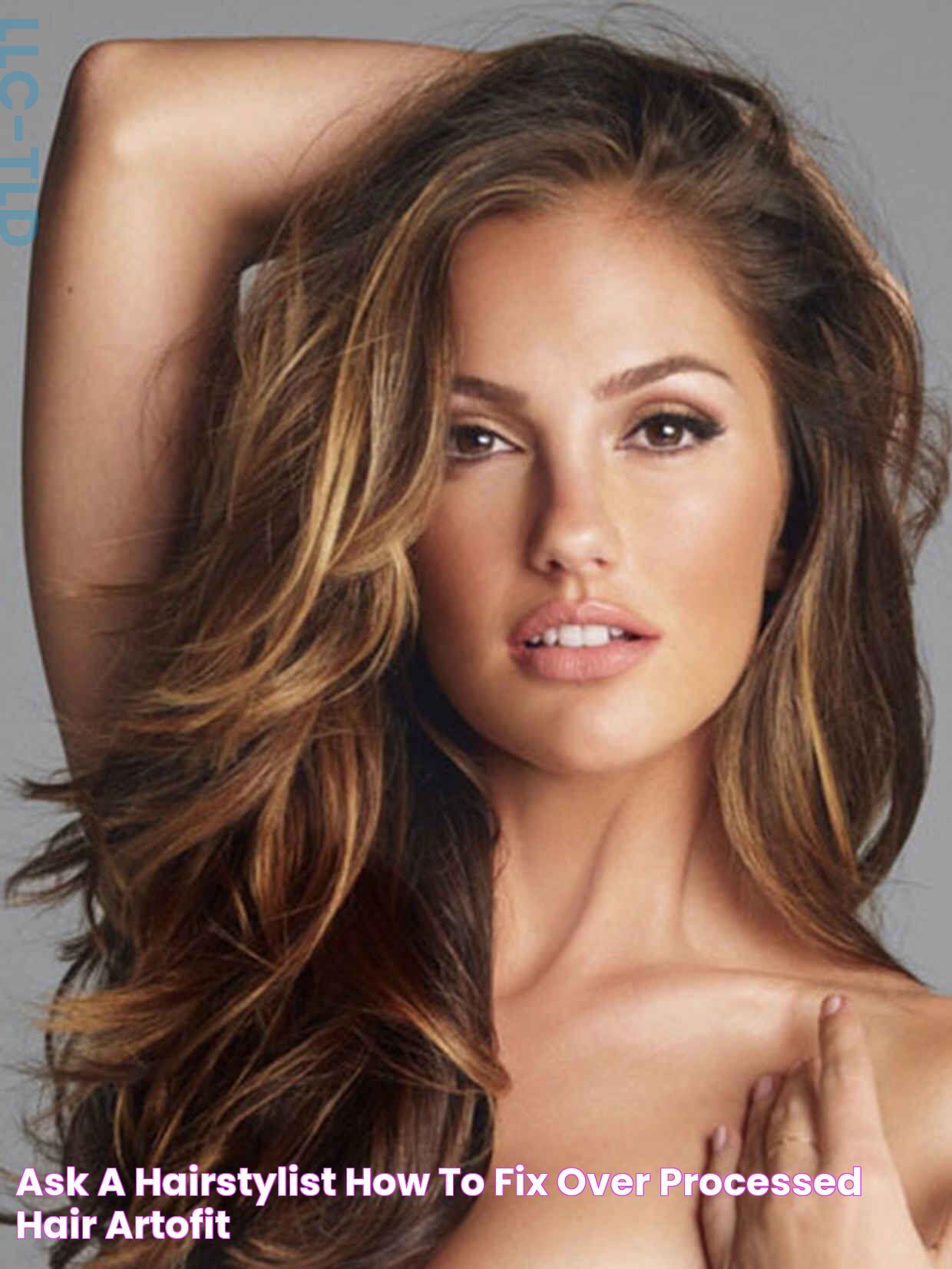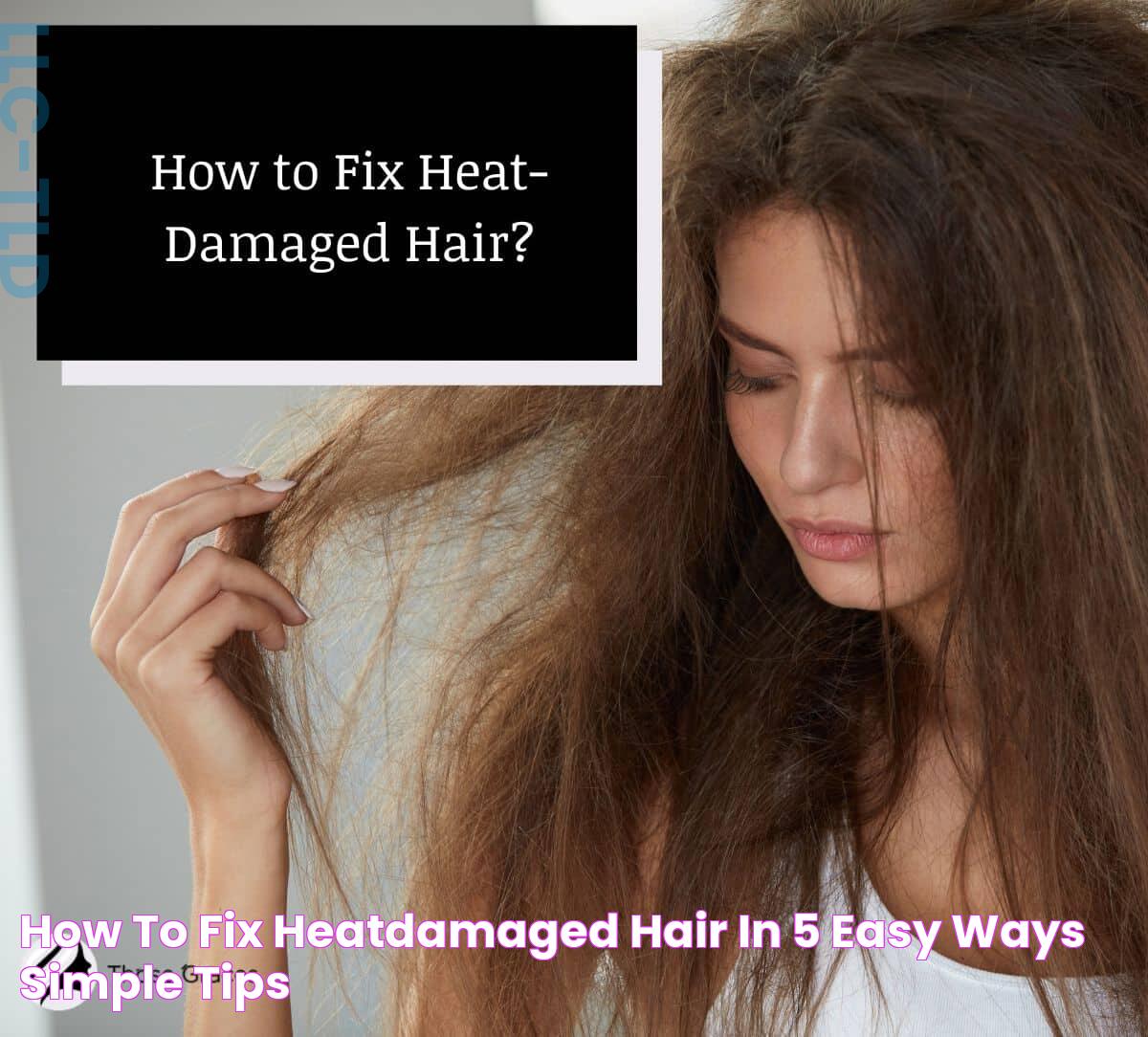Hair manipulation is an everyday practice for most people, whether it involves styling, coloring, or straightening. However, excessive manipulation can lead to damaged, over-manipulated hair that feels brittle and unhealthy. Reviving your hair's health is not just about aesthetics but also about maintaining the overall well-being of your tresses. Understanding how to fix over manipulated hair can be the first step towards restoring your hair's natural shine and strength.
There are numerous factors that contribute to over manipulated hair, including frequent use of heat styling tools, harsh chemical treatments, and improper hair care routines. While these practices may offer temporary beauty benefits, they can strip the hair of its natural oils, leading to dryness, breakage, and dullness. The good news is that with the right techniques and products, you can rejuvenate your hair and prevent further damage.
In this comprehensive guide, we'll explore practical solutions and expert advice on how to fix over manipulated hair. From understanding the root causes of hair damage to implementing effective hair care strategies, this article will provide you with the knowledge and tools needed to transform your haircare routine and restore your hair's vitality. Let's embark on a journey towards healthier, more resilient hair.
Read also:The Ultimate Guide To The Best Neutral Eyeshadow Palette
Table of Contents
- Understanding Hair Manipulation
- Signs of Over Manipulated Hair
- How Does Hair Get Over Manipulated?
- Impact of Over-Manipulation on Hair Health
- Preventing Hair Damage
- Essential Hair Care Routine
- Natural Remedies for Damaged Hair
- Role of Nutrition in Hair Health
- Choosing the Right Hair Products
- How to Fix Over Manipulated Gair?
- Professional Hair Treatments
- Long-term Hair Care Strategies
- Myths About Hair Care
- Frequently Asked Questions
- Conclusion
Understanding Hair Manipulation
Hair manipulation refers to the various ways individuals style, treat, and maintain their hair. These practices can range from simple brushing and combing to more complex techniques such as coloring, perming, and heat styling. While these actions help achieve desired looks, they can also lead to hair damage if not done correctly or excessively.
The key to healthy hair manipulation lies in balancing styling preferences with the natural needs of your hair. Protecting the hair's natural structure and moisture levels is crucial in preventing damage and maintaining its vitality.
Signs of Over Manipulated Hair
Recognizing the signs of over manipulated hair is essential to address the issue promptly. Some common indications include:
- Dryness: Hair feels brittle and lacks moisture.
- Breakage: Hair strands are prone to snapping and splitting.
- Frizz: Unmanageable hair with a rough texture.
- Dullness: Lack of natural shine and vibrancy.
- Tangled Hair: Knots and tangles are frequent.
Identifying these signs early can help in taking the necessary steps to restore hair health.
How Does Hair Get Over Manipulated?
Hair becomes over-manipulated through various methods, primarily involving repetitive and harsh styling techniques. Common causes include:
- Heat Styling: Frequent use of blow dryers, flat irons, and curling wands.
- Chemical Treatments: Regular use of dyes, relaxers, and perms.
- Tight Hairstyles: Ponytails, braids, and buns that stress hair strands.
- Improper Washing: Over-washing or using harsh shampoos.
- Inadequate Conditioning: Skipping or improper use of conditioners.
Understanding these causes can help in making more informed decisions about hair care practices.
Read also:The Effects And Treatment Of Hyperpigmentation On The Lower Level Of Skin
Impact of Over-Manipulation on Hair Health
The effects of over-manipulation on hair health are both immediate and long-term. Immediate impacts include dryness and frizz, while long-term effects can lead to severe hair loss and irreversible damage. It's crucial to address these issues early to prevent further deterioration.
Consistently over-manipulated hair can suffer damage to the cuticle, cortex, and medulla—the three layers of the hair strand. Damage to these areas can weaken the hair structure, making it more susceptible to environmental stressors and further manipulation.
Preventing Hair Damage
Preventing hair damage involves adopting a proactive approach to hair care. Here are some tips to keep your hair healthy:
- Limit Heat Exposure: Reduce the use of heat styling tools and opt for air drying whenever possible.
- Use Gentle Products: Choose shampoos and conditioners with natural ingredients.
- Moisturize Regularly: Incorporate leave-in conditioners and hair oils into your routine.
- Protect Hair: Use protective styles and cover hair when outdoors to shield from environmental damage.
Implementing these practices can significantly reduce the risk of hair damage.
Essential Hair Care Routine
An effective hair care routine is vital for maintaining healthy hair. Here’s a recommended routine to follow:
- Wash: Cleanse hair with a mild shampoo twice a week.
- Condition: Apply a deep conditioner to restore moisture.
- Detangle: Use a wide-tooth comb to gently detangle.
- Style: Opt for heat-free styling methods.
- Protect: Cover hair at night with a silk or satin scarf.
Sticking to this routine can improve the overall health and appearance of your hair.
Natural Remedies for Damaged Hair
Natural remedies can be effective in treating and preventing hair damage. Here are some popular options:
- Coconut Oil: Known for its moisturizing properties, coconut oil can penetrate the hair shaft and reduce protein loss.
- Aloe Vera: Soothes the scalp and conditions hair, promoting a healthy environment for hair growth.
- Honey: A natural humectant, honey helps retain moisture in the hair.
- Avocado: Rich in vitamins and fatty acids, avocado can nourish and strengthen hair strands.
Incorporating these natural ingredients into your hair care routine can enhance your hair's resilience and shine.
Role of Nutrition in Hair Health
A balanced diet plays a crucial role in maintaining healthy hair. Essential nutrients for hair health include:
- Protein: Supports hair growth and strength.
- Omega-3 Fatty Acids: Promotes scalp health and hair hydration.
- Vitamins A and C: Essential for sebum production and collagen formation.
- Biotin: Known to improve hair thickness and prevent hair loss.
Incorporating these nutrients into your diet can improve hair health from the inside out.
Choosing the Right Hair Products
Selecting appropriate hair products is essential for preventing and repairing damage. Consider the following:
- Shampoos: Opt for sulfate-free formulas to prevent stripping natural oils.
- Conditioners: Look for products with hydrating ingredients like shea butter and argan oil.
- Styling Products: Choose alcohol-free gels and mousses to avoid drying out hair.
- Treatments: Use protein treatments sparingly to strengthen hair.
Understanding the ingredients and functions of hair products can help you make informed choices.
How to Fix Over Manipulated Gair?
Fixing over-manipulated hair requires a comprehensive approach. Here are some strategies to consider:
- Identify the Problem: Determine the specific causes of hair damage.
- Adjust Your Routine: Tailor your hair care routine to address specific issues.
- Trim Regularly: Remove split ends to prevent further damage.
- Use Protective Styles: Minimize stress on hair strands with protective hairstyles.
- Consult a Professional: Seek advice from a hairstylist for personalized solutions.
Implementing these strategies can help restore your hair's health and vitality.
Professional Hair Treatments
Professional treatments can provide intensive care for severely damaged hair. Popular options include:
- Keratin Treatment: Smooths and strengthens hair by infusing keratin protein.
- Olaplex Treatment: Rebuilds broken hair bonds and restores strength.
- Scalp Treatments: Cleanses and revitalizes the scalp for healthier hair growth.
- Moisture Treatments: Deep conditioning therapies to replenish hydration.
Consulting with a professional can help you choose the right treatment for your hair type and condition.
Long-term Hair Care Strategies
Maintaining healthy hair requires long-term commitment. Consider these strategies for lasting results:
- Consistency: Stick to a regular hair care routine.
- Adaptability: Adjust your routine based on seasonal changes and hair needs.
- Regular Check-ups: Visit a hairstylist for periodic assessments and trims.
- Mindful Styling: Be gentle with hair styling to minimize damage.
These strategies can help ensure long-lasting hair health and resilience.
Myths About Hair Care
Many myths about hair care can lead to misconceptions. Here are some common myths debunked:
- Myth 1: Cutting hair often makes it grow faster. Truth: Trims prevent split ends but don’t affect growth rate.
- Myth 2: Frequent shampooing is harmful. Truth: Regular cleansing is necessary, but frequency depends on hair type.
- Myth 3: Brushing hair 100 times a day is beneficial. Truth: Excessive brushing can lead to breakage.
- Myth 4: Air drying is always better than blow drying. Truth: Controlled use of a blow dryer with heat protectant can be safe.
Understanding these myths can help you make better-informed hair care decisions.
Frequently Asked Questions
- What is the main cause of over-manipulated hair? Excessive use of heat styling tools and chemical treatments are the primary causes of over-manipulated hair.
- How can I prevent further damage to my hair? Limit heat exposure, use gentle products, and incorporate regular conditioning into your routine to prevent further damage.
- Are natural remedies effective for damaged hair? Yes, natural remedies like coconut oil and aloe vera can help restore moisture and improve hair health.
- How often should I trim my hair to maintain its health? Regular trims every 6-8 weeks can help remove split ends and maintain healthy hair.
- Can a poor diet affect my hair health? Yes, a lack of essential nutrients can lead to weak, brittle hair and slow growth.
- Is it necessary to consult a professional for hair damage? Consulting a professional can provide personalized solutions and effective treatments for severe hair damage.
Conclusion
Understanding how to fix over manipulated hair is crucial for restoring its health and vitality. By recognizing the signs of damage, implementing effective hair care routines, and using the right products, you can rejuvenate your hair. Whether opting for natural remedies or professional treatments, the key is consistency and commitment to maintaining healthy hair. Adopting long-term strategies and debunking common myths will empower you to make informed decisions about your hair care. With patience and dedication, achieving healthy, resilient hair is within reach.

